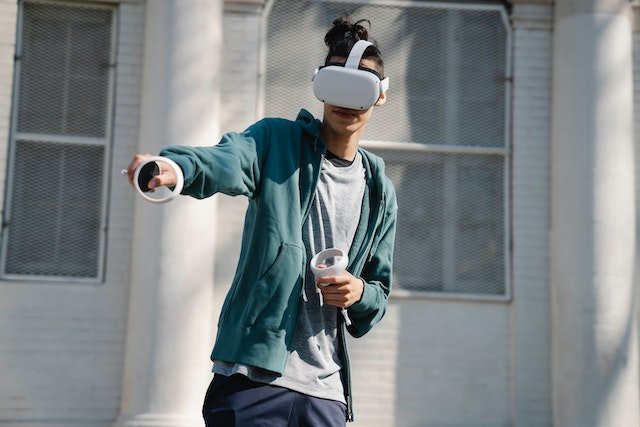Last Updated on July 10, 2023 by
Virtual Reality (VR) is revolutionizing the way we learn. By immersing users in a simulated environment, VR can enable learners to more deeply experience and understand concepts that they are studying. With recent advances in technology, virtual reality has become increasingly accessible to educators — allowing them to bring real-world experiences into their classrooms through the power of simulation. In this blog post, we’ll explore three key aspects of immersive VR education: its benefits for teaching and learning, potential applications in various educational contexts, and challenges that must be addressed for successful implementation.
Table of Contents
What is immersive virtual reality (VR) education and how does it work
Virtual reality (VR) technology has come a long way since its inception, and immersive VR education is the latest addition to the field. It’s an educational technique that uses VR technology to create a lifelike environment that students can explore, interact with and learn from in a virtual world. It works by using headsets and controllers to simulate the sensation of being in a real-world environment while being completely immersed in a 3D virtual environment. This experience can serve as a valuable tool to enhance learning, particularly in subjects that are difficult or expensive to teach in the real world. For instance, students can use VR to study and experience the human body, visit historical places, or even explore space from the comfort of their classroom. Immersive VR education is undoubtedly a cutting-edge solution to revolutionize traditional teaching methods and create opportunities for better outcomes.
Benefits of using immersive VR in the classroom
With the constant advancements in technology, educators are always looking for innovative ways to enhance the learning experience for their students. Immersive VR education is one such method that is gaining popularity for its numerous benefits. By bringing the virtual world into the classroom, students can engage with the subject matter on a much more personal level than traditional teaching methods. Immersive VR simulates real-world experiences, which makes the learning process more impactful, immersive and memorable. Studies have shown that students who learn using this method are more motivated to learn, retain information better and are more likely to participate in class discussion. The benefits of immersive VR education are clear, and it is quickly becoming an essential tool for educators who want to provide a modern and dynamic learning experience for their students.
Tips for making the most of your VR education experience
Virtual Reality (VR) education has revolutionized the way we learn and has transformed traditional classroom set-ups into immersive experiences. It offers a unique way of engaging with studies by bringing them to life, making it easier for learners to understand complex concepts. However, to make the most of this new technology, one has to be strategic in their approach. Firstly, look for VR content that is specific to your learning objectives. Secondly, engage with the material and ask questions where possible. It’s also vital to pace yourself with breaks, as this will help alleviate VR sickness. Lastly, take the time to reflect on the experience and evaluate the effectiveness of using VR for any given subject. These tips will enable one to thrive in the new era of education, where students can explore and interact with subjects in the most unexpected ways.
Check out ST Engineering Antycip for more.
Apart from that, if you are interested to know about Benefits of Learning New things then visit our Education category.




















